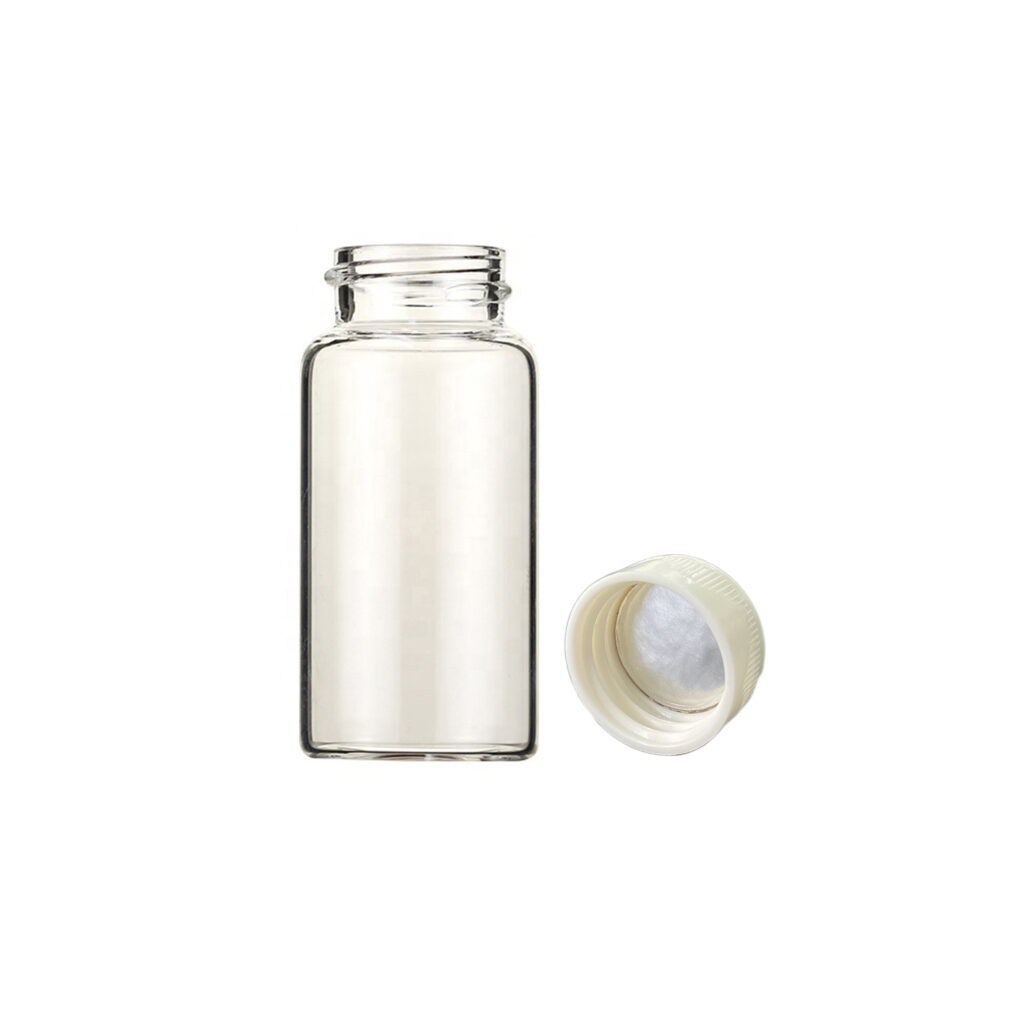Technical Innovation and Application Expansion of Scintillation Vials
Introduction
Scintillation vials are a key laboratory apparatus used for radioactivity detection and are widely used in scientific research and industry. Its core function is to convert the energy of radioactive particles into light signals by means of scintillator materials, thus realizing highly sensitive detection. Scintillation vials play an irreplaceable role in the fields of radioactivity detection, drug research and development, and environmental monitoring.
With the continuous emergence of new materials, technologies and applications, the performance and application scenarios of scintillation vials are undergoing revolutionary changes. The introduction of new materials has improved the durability and detection accuracy of scintillation vials, the application of new technologies has made them more intelligent and efficient, and the expansion of new fields has brought them a broader market prospect.
The purpose of this paper is to explore how these innovations will drive the future development of scintillation vials and to analyze their potential applications in biomedical, environmental monitoring, and nuclear energy industries.
By studying the future trends of scintillation vials, we can better understand their importance in scientific research and industrial testing, and provide new ideas and directions for technological advances in related fields.
Application of New Materials
High Performance Plastics
High-performance plastics, such as polystyrene and polycarbonate, are becoming important materials in the manufacture of scintillation vials. These materials are lightweight, chemically resistant and highly transparent, and can effectively enhance the performance of scintillation vials.
Innovations in Glass Materials
Traditional glass materials have always played an important role in scintillation vials, and new glass materials (e.g. borosilicate glass) have further enhanced their performance. Borosilicate glass is characterized by high heat resistance, low background radiation and long life, which makes it particularly suitable for high-precision radioactivity detection and long-term experiments. In addition, its chemical stability allows it to withstand a wide range of strong acid and alkali environments, extending the range of applications for scintillation vials in extreme environments. The innovation of glass material provides the reliability of scintillation vials in demanding experiments.
Composite material
Composite materials, such as glass-plastic composites, are becoming a new trend in the manufacture of scintillation vials. These materials combine the high heat resistance and low background radiation properties of glass with the lightweight and impact resistance of plastics, significantly improving the overall performance of scintillation vials. In addition, the flexibility of composites allows them to be adapted to more diverse experimental needs, opening up new possibilities for the future play of scintillation vials there.
Application of New Technologies
3D printing technology
3D printing technology is revolutionizing the manufacture of blinking bottles. Highly customized bottle designs, such as special shapes or sizes of scintillator bottles, can be achieved through 3D printing. 3D printing technology allows for rapid prototyping, significantly shortening the development cycle while reducing production costs. The flexibility of this technology makes the manufacturing of scintillation bottles more efficient and economical, and is particularly suitable for small batch customized production.
Nanotechnology
Nanotechnology is used in scintillation bottles mainly in the form of nanocoatings and nanomaterials for enhanced performance. For example, nano-coatings can improve the chemical stability and wear resistance of Pinti, while the addition of nanomaterials (e.g., nanoparticles) can enhance the sensitivity of the scintillator, reduce the background noise, and improve the durability and service life of the glass vials, providing new possibilities for performance enhancement of scintillation vials.
Smart Sensing Technology
The introduction of smart sensing technology provides experiments with the ability to monitor and analyze data in real time. Scintillation vials can thus collect real-time radioactivity data and realize remote monitoring through wireless transmission. This technology improves the efficiency of experiments and reduces human error, making it suitable for long or high-precision experimental scenarios.
Exploration of New Applications
Biomedical field
Scintillation vials are finding increasing application in the biomedical field, especially in drug screening and radioactivity tracking in cancer treatment. In drug discovery, scintillation vials are used to detect the metabolism of radiolabeled compounds to understand that piggybacking researchers are assessing the efficacy and safety of drugs. In cancer treatment, scintillation vials can be used to track the distribution and targeting effect of radiopharmaceuticals, providing support for precision medicine.

Environmental monitoring
Scintillation bottles are widely used with radioactive contamination detection and water quality testing. Scintillation vials can also be used to monitor radioisotopes in water to ensure safe drinking water. In nuclear accidents or industrial pollution incidents, scintillation vials can quickly detect radioactive substances in the environment and assess the degree of contamination. Its high precision, fast response and long-term stability make it an ideal tool in environmental detection, providing important support for environmental protection and public safety.
Nuclear energy industry
The application of scintillation vials in the nuclear energy industry mainly focuses on nuclear reactor monitoring and nuclear waste disposal. During the operation of nuclear reactors, scintillation vials are used to monitor radioactivity levels in real time to ensure safe reactor operation. In nuclear waste disposal, scintillation vials are used to detect radioactive substances in the waste to help assess the effectiveness and safety of the disposal. The high radiation resistance, reliability and safety of scintillation vials make them important in the nuclear energy industry, and their future application in this field is promising.
Future Development Trends
Advances in materials science
In the future, advances in materials science will significantly improve the performance of scintillation bottles. The development of lighter, stronger, and more environmentally friendly materials will reduce the weight of scintillation bottles while increasing their durability and sustainability. The introduction of new composites or biodegradable materials may further optimize the chemical stability and environmental friendliness of scintillation bottles. These innovations will allow scintillation bottles to perform even better under extreme conditions while reducing their environmental impact.
Innovations in manufacturing technology
Innovations in manufacturing technologies, such as automated production and smart manufacturing, will revolutionize the way scintillation bottles are produced. Automated production lines will increase productivity and reduce human error, while smart manufacturing technologies will enable real-time quality monitoring and personalization. These technologies will not only reduce production costs, but also improve product consistency and reliability to meet increasingly diverse market demands.
Expansion of fields of application
The application areas of scintillation vials will be further expanded to cover more cutting-edge fields. In space exploration, scintillation bottles can be used to monitor cosmic rays and radioactive substances in the space environment; in deep-sea exploration, it can be used to detect the radioactive characteristics of seabed resources. In addition, with the deepening of multidisciplinary crossover and cross-industry cooperation, scintillation bottles may find new application scenarios in fields such as energy, agriculture and even food safety. This expansion will promote the penetration of scintillation bottles from laboratory tools to a wider range of industrial and scientific fields.
Challenges and Opportunities
Technical challenges
Although new materials and technologies offer great potential for scintillation vials, their application still faces many technical challenges. Compatibility issues with new materials may lead to unstable performance, while complex manufacturing processes may increase production costs and difficulties. In addition, the integration of smart sensing technologies and nanomaterials needs to address signal interference and long-term stability. These challenges require interdisciplinary collaboration and continuous technological innovation.
Market opportunities
Scintillation vials are full of opportunities in future markets. The demand for high-performance scintillation vials will continue to grow with the rapid growth of the biomedical, environmental monitoring and nuclear energy industries. Increased investment in research in emerging markets such as Asia Pacific and the government’s focus on radiation detection will further drive market expansion. In addition, the demand for customization and small batch production provides new business opportunities for innovative manufacturers.
Sustainable development
In the context of sustainability, the manufacturing and application of scintillation vials is moving towards being more environmentally sustainable. The use of recyclable or biodegradable materials reduces environmental pollution, while the circular economy model helps to reduce resource waste. By optimizing production processes and promoting green materials, the scintillation vials industry can contribute to sustainable development by meeting scientific and industrial needs while reducing negative environmental impacts.
Conclusion
The combination of new materials, technologies and applications is profoundly changing the future trajectory of scintillation vials. Innovations such as performance-modified plastics, nanotechnology and smart sensing are not only enhancing the performance of scintillation vials, but also expanding their range of applications, enabling them to play an even more important role in the biomedical, environmental monitoring and nuclear energy industries. In the future, with advances in materials science and manufacturing technology, scintillation vials will become lighter, smarter and more environmentally friendly, while opening up broader applications in emerging fields such as space exploration and deep ocean exploration.
The importance of scintillation vials as a key tool in scientific research and industrial testing will further increase with technological advances and growing demand. Through continuous innovation and cross-sector collaboration, the scintillation vials industry will not only be able to overcome current technological challenges, but also seize more opportunities in the global market to provide strong support for scientific development and industrial progress. Looking ahead, scintillation vials will continue to play an irreplaceable role in radiation detection and related fields, advancing mankind’s in-depth exploration of nature and technology.

 Italiano
Italiano Português
Português
